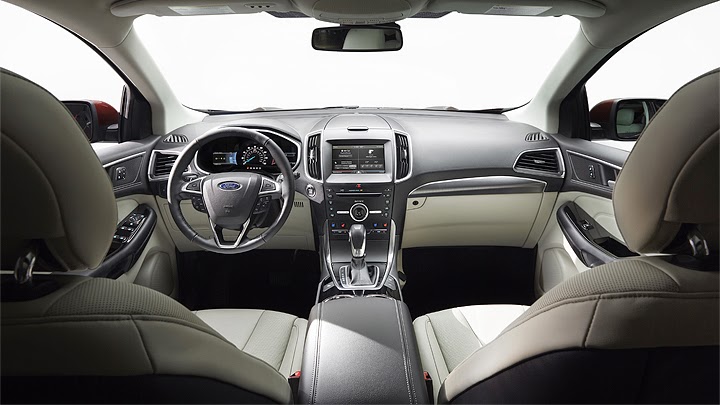
Like its smaller brothers EcoSport and Escape, Edge will become a truly global vehicle for the first time, being sold in dozens of countries with the fewest possible changes. Besides cutting costs by producing fewer vehicles in higher scales, Ford has taken this as an opportunity to improve its products in several ways. They have become more expensive, too, but the public has always showed that it does not matter too much when the vehicle is truly worth it. As the pictures show, Edge’s all-new generation brought evolutions, more than changes. After all, Ford will do everything to keep its sales as consistent as they have always been – it is claimed to have moved as many units last year as it did in 2006, the year when it first appeared.
Nevertheless, repeating such performance across the Atlantic takes more. Edge will leave generalist-brand rivals such as Nissan Murano and Toyota Venza to take customers away from Audi Q5, BMW X3 or Volvo XC60. This is why Edge tried to become better in everything, in fact. The design, for instance, toned the previous imponence a little down in order to look fancier. The section is still dominated by the upper grille, as always, but this time it left more space for both headlights and the other air intakes. The first look more suitable for this kind of vehicle with those straight contours, while the latter ones have different designs according to the trim level: Sport drops the black protection bar and extends the body color to the entire bumper.







All the volumes and creases started up front are continued by the sides. These carry over almost all the elements seen at the outgoing car, but all of them were reinvented so as to look nimbler. The connection between windows and sheetmetal is smoother thanks to lowering the upper crease to the door handles’ height, while those received an ascending base line. The lower crease, in turn, was a little raised in order to make that light-and-shadow game which became one of this decade’s strongest styling trends. Last but not least, the rear fascia dropped the square lights in favor of a much sleeker horizontal set, which is connected above the license plate with an optional array of red LEDs. The bumper also varies with the trim level, including the exhaust tips.
Edge did become more “technological” than ever, as you have already figured, but not in the way of borrowing its interior from science-fiction movies’ spaceships. The latest-version MyFord Touch brought back some buttons, for they are still easier to operate while driving than a touchscreen. Besides, there are much better materials and more ergonomic elements, along with long and interesting equipment lists: between standard and optional items, Edge offers adaptive cruise control and steering, full parking assist, the typical list of electronic safety systems, along with two new airbag types. One stands for the inflatable seat belts, and the other are “active glove-box knee bag”, whose debut will be held on the also all-new Mustang.







Other improvements concern the overall structure: borrowing Ford’s global CD4 platform enabled Edge to have more high-strength steel, and therefore to increase stiffness by 26% and torsional rigidity by 16%. Dimensions, in turn, were changed as follows: height grew by 4, length by 9.9 and wheelbase by 2.5 cm, while the width is 0.2 cm shorter. Such numbers brought extra 155.7 L to the cabin and 198.2 to the trunk, making the legroom stretch by 4.8 cm at the first row and 2.5 cm at the second – there is no official information about a seven-seat Edge so far. The Sport trim justifies its name by adding bigger shocks and springs and stiffer front and rear anti-roll bars, along with black-painted wheels and changing the external inserts from chrome to black.
Speaking of which, the new Edge can be bought in SE, SEL, Titanium and Sport. Base option for the first three is the four-cylinder EcoBoost 2.0L, which received several updates to become more efficient and reach 245 hp. If you want more power, the optional 3.5L V6 was carried over with emission-focused tweaks and lost 20 hp, being good for 265 now. However, taking Sport gives you the EcoBoost 2.7L propeller, whose two turbos help it reach the claimed “more than 300 hp”. All those use a six-speed automatic transmission fitted with a Sport mode, and offer all-wheel-drive as an option. In Europe, all those will be changed in favor of a diesel range, composed by a four-cylinder, TDCi 2.0L engine capable of 178 hp or 207 hp (using one or two turbines).